-
 Bitcoin
Bitcoin $108,262.4325
-1.40% -
 Ethereum
Ethereum $2,518.2882
-2.94% -
 Tether USDt
Tether USDt $1.0003
-0.01% -
 XRP
XRP $2.2262
-1.71% -
 BNB
BNB $653.9254
-1.55% -
 Solana
Solana $148.1036
-3.11% -
 USDC
USDC $1.0000
0.01% -
 TRON
TRON $0.2829
-1.45% -
 Dogecoin
Dogecoin $0.1639
-4.82% -
 Cardano
Cardano $0.5742
-4.43% -
 Hyperliquid
Hyperliquid $38.9506
-3.95% -
 Sui
Sui $2.9040
-4.34% -
 Bitcoin Cash
Bitcoin Cash $484.8307
-2.62% -
 Chainlink
Chainlink $13.1971
-3.73% -
 UNUS SED LEO
UNUS SED LEO $9.0822
0.51% -
 Avalanche
Avalanche $17.8613
-4.01% -
 Stellar
Stellar $0.2385
-2.26% -
 Toncoin
Toncoin $2.7570
-3.88% -
 Shiba Inu
Shiba Inu $0.0...01145
-3.99% -
 Litecoin
Litecoin $86.9999
-2.43% -
 Hedera
Hedera $0.1538
-3.90% -
 Monero
Monero $313.7554
-2.03% -
 Polkadot
Polkadot $3.3681
-5.08% -
 Dai
Dai $1.0000
0.00% -
 Ethena USDe
Ethena USDe $1.0001
-0.01% -
 Bitget Token
Bitget Token $4.4401
-2.97% -
 Uniswap
Uniswap $6.9644
-8.41% -
 Pepe
Pepe $0.0...09666
-4.79% -
 Aave
Aave $266.5686
-5.04% -
 Pi
Pi $0.4713
-4.95%
What is DeFi (decentralized finance)? How is it different from traditional finance?
DeFi uses blockchain to offer financial services without intermediaries, providing transparency, accessibility, and efficiency compared to traditional finance.
Apr 11, 2025 at 01:43 pm

What is DeFi (Decentralized Finance)? How is it Different from Traditional Finance?
Decentralized Finance, commonly known as DeFi, represents a shift in the financial paradigm, leveraging blockchain technology to offer financial services without the need for traditional intermediaries such as banks. DeFi aims to create an open, transparent, and accessible financial system that operates on public blockchains, primarily Ethereum. This innovative approach to finance has garnered significant attention within the cryptocurrency community due to its potential to democratize financial services.
The Core Principles of DeFi
DeFi is built on several foundational principles that distinguish it from traditional finance. Decentralization is at the heart of DeFi, meaning that financial services are managed by smart contracts—self-executing code that runs on the blockchain—rather than centralized institutions. This decentralization aims to reduce the risk of manipulation and censorship, offering users greater control over their financial assets.
Transparency is another critical aspect of DeFi. All transactions and smart contract operations are recorded on the blockchain, making them publicly verifiable. This level of transparency is a stark contrast to traditional finance, where many operations are conducted behind closed doors, and the inner workings of financial institutions are often opaque to the public.
Interoperability is also a key feature of DeFi. Many DeFi protocols are designed to be compatible with each other, allowing users to seamlessly move assets and data between different applications. This interconnectedness fosters a vibrant ecosystem where innovation can flourish.
Key Components of DeFi
DeFi encompasses a wide range of financial services and products, each designed to replicate or enhance traditional financial offerings. Decentralized exchanges (DEXs) allow users to trade cryptocurrencies directly with one another without the need for a central authority. Examples include Uniswap and SushiSwap, which use automated market makers (AMMs) to facilitate trades.
Lending and borrowing platforms are another cornerstone of DeFi. Platforms like Aave and Compound enable users to lend out their cryptocurrency and earn interest, or borrow against their crypto holdings. These platforms operate on smart contracts that automatically manage the lending and borrowing process, ensuring that all terms are adhered to without the need for intermediaries.
Stablecoins are another vital component of DeFi. These are cryptocurrencies designed to maintain a stable value, often pegged to a fiat currency like the US dollar. Stablecoins such as DAI, which is issued by the MakerDAO protocol, provide a reliable means of exchange within the DeFi ecosystem, mitigating the volatility often associated with other cryptocurrencies.
DeFi vs. Traditional Finance: Key Differences
The differences between DeFi and traditional finance are profound and multifaceted. Accessibility is one of the most significant distinctions. Traditional finance often requires individuals to go through a rigorous process of identity verification and account opening, which can be a barrier for many people. In contrast, DeFi platforms typically require only a cryptocurrency wallet, making financial services more accessible to a global audience.
Control and custody of assets also differ markedly between the two systems. In traditional finance, banks and other institutions hold and manage customer assets. In DeFi, users maintain control over their assets through private keys, reducing the risk of third-party interference or mismanagement.
Speed and efficiency are other areas where DeFi shines. Traditional financial transactions can take days to settle, especially across borders. DeFi transactions, on the other hand, are settled almost instantly on the blockchain, providing a much more efficient means of moving funds.
Cost is another factor where DeFi has an edge. Traditional financial services often come with high fees, including account maintenance fees, transaction fees, and more. DeFi platforms, while not entirely free, typically have lower fees due to the absence of intermediaries.
Challenges and Risks in DeFi
Despite its many advantages, DeFi is not without its challenges and risks. Security is a primary concern, as smart contracts are not immune to bugs and vulnerabilities. High-profile hacks and exploits have occurred in the past, resulting in significant losses for users. It is crucial for users to conduct thorough research and use reputable platforms to mitigate these risks.
Regulatory uncertainty is another significant challenge facing DeFi. As a relatively new and rapidly evolving field, it is unclear how governments and regulatory bodies will approach DeFi. Some countries have already begun to implement regulations that could impact the growth and adoption of DeFi.
Scalability is also a concern. Many blockchains, including Ethereum, face scalability issues that can lead to high transaction fees and slow processing times during periods of high demand. Solutions such as layer-2 scaling technologies are being developed to address these issues, but they are still in the early stages of adoption.
The Impact of DeFi on the Cryptocurrency Ecosystem
DeFi has had a profound impact on the broader cryptocurrency ecosystem. It has spurred innovation and attracted a diverse range of participants, from retail investors to institutional players. Yield farming and liquidity mining are examples of innovative mechanisms that have emerged within DeFi, allowing users to earn rewards by providing liquidity to DeFi protocols.
DeFi has also played a role in increasing the utility and adoption of cryptocurrencies. By offering practical financial services, DeFi has helped to shift the perception of cryptocurrencies from speculative assets to tools for everyday financial management.
The integration of non-fungible tokens (NFTs) with DeFi is another area of growth. NFTs, which represent unique digital assets, can be used as collateral in DeFi lending platforms, opening up new possibilities for asset-backed lending.
Frequently Asked Questions
Q: Can DeFi completely replace traditional finance?
A: While DeFi offers many advantages over traditional finance, it is unlikely to completely replace it in the near term. Traditional finance has a well-established infrastructure and regulatory framework that DeFi currently lacks. However, DeFi can coexist with traditional finance, offering an alternative for those seeking more control and transparency in their financial dealings.
Q: How can I get started with DeFi?
A: To get started with DeFi, you will need a cryptocurrency wallet that supports interaction with DeFi protocols, such as MetaMask. Once you have a wallet set up, you can deposit your cryptocurrency into a DeFi platform and begin using its services. It is essential to research and understand the risks involved before diving into DeFi.
Q: What are the most popular DeFi platforms?
A: Some of the most popular DeFi platforms include Uniswap for decentralized trading, Aave and Compound for lending and borrowing, and MakerDAO for issuing the DAI stablecoin. These platforms are widely used within the DeFi ecosystem and offer a range of services to users.
Q: How do I ensure the security of my assets in DeFi?
A: To ensure the security of your assets in DeFi, it is crucial to use reputable platforms and conduct thorough research before interacting with any smart contract. Always use a hardware wallet to store your private keys, and never share your private keys with anyone. Additionally, stay informed about the latest security best practices and be cautious of phishing attempts and other scams prevalent in the DeFi space.
Disclaimer:info@kdj.com
The information provided is not trading advice. kdj.com does not assume any responsibility for any investments made based on the information provided in this article. Cryptocurrencies are highly volatile and it is highly recommended that you invest with caution after thorough research!
If you believe that the content used on this website infringes your copyright, please contact us immediately (info@kdj.com) and we will delete it promptly.
- Bitcoin's Pattern Break: Are HODLers the Key to the Next Surge?
- 2025-07-04 18:50:12
- Bitcoin Price, Trump's Bill, and the $150K Dream: A NYC Take
- 2025-07-04 19:50:12
- Ethereum, LILPEPE, and the July Bounce: Will Pepe Steal ETH's Thunder?
- 2025-07-04 19:10:12
- Binance Institutional Loans: Unlocking 4x Leverage and Zero Interest for Whales
- 2025-07-04 19:15:12
- Bitcoin Bull Run: Analysts Eye Peak in Late 2025?
- 2025-07-04 19:20:13
- Pepe Indicators, Bullish Forecast: Can the Meme Coin Rally?
- 2025-07-04 19:25:12
Related knowledge
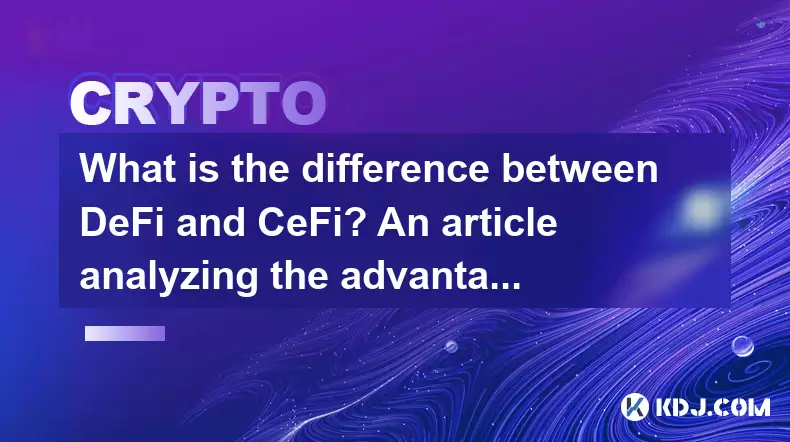
What is the difference between DeFi and CeFi? An article analyzing the advantages and disadvantages of both
Jun 13,2025 at 03:57am
Understanding the Foundations of DeFi and CeFiTo fully grasp the difference between DeFi (Decentralized Finance) and CeFi (Centralized Finance), it’s essential to understand their foundational structures. DeFi operates on blockchain technology, primarily using smart contracts to execute financial services without intermediaries. In contrast, CeFi platfo...
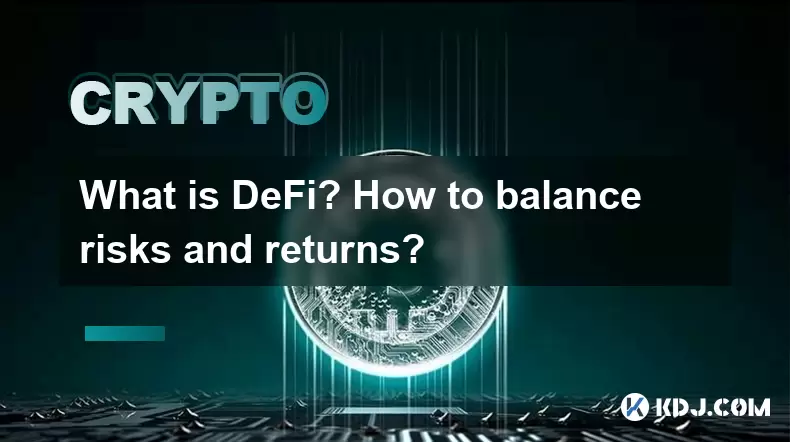
What is DeFi? How to balance risks and returns?
May 31,2025 at 12:22pm
What is DeFi? How to Balance Risks and Returns? Decentralized Finance, commonly known as DeFi, represents a revolutionary shift in the financial ecosystem, leveraging blockchain technology to create an open, permissionless, and transparent financial service network. Unlike traditional finance, which relies on centralized institutions like banks, DeFi op...
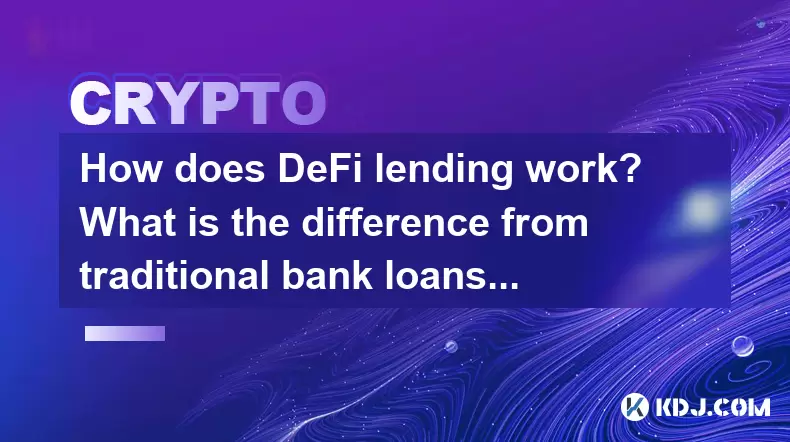
How does DeFi lending work? What is the difference from traditional bank loans?
May 29,2025 at 05:36pm
Introduction to DeFi LendingDeFi lending, or decentralized finance lending, represents a revolutionary shift in the way borrowing and lending are conducted. Unlike traditional bank loans, DeFi lending operates on blockchain technology, offering a decentralized, transparent, and often more accessible approach to finance. This article will explore the mec...
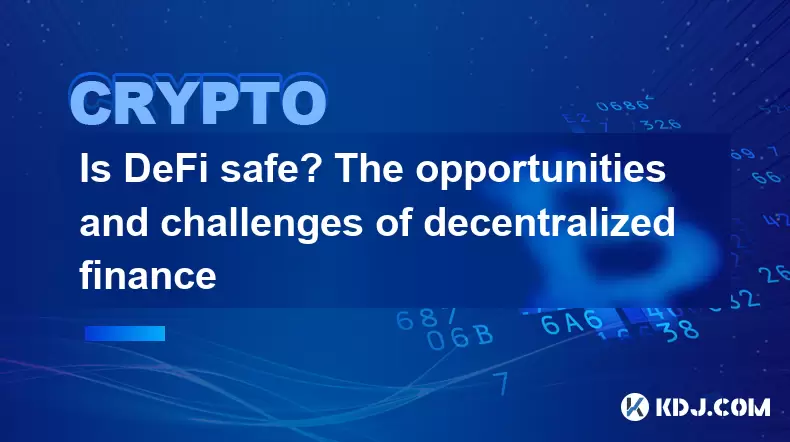
Is DeFi safe? The opportunities and challenges of decentralized finance
May 27,2025 at 02:28pm
Decentralized Finance, commonly known as DeFi, has revolutionized the financial landscape by offering a range of financial services without the need for traditional intermediaries like banks. As with any innovative technology, the question of safety is paramount. This article delves into the opportunities and challenges that come with DeFi, providing a ...

DeFi Mining Tutorial: How to Maximize Profits and Reduce Risks?
May 27,2025 at 07:42am
DeFi, or Decentralized Finance, has opened up a new world of opportunities for crypto enthusiasts looking to maximize their profits through various mining strategies. However, with great potential comes significant risk. This tutorial aims to guide you through the process of engaging in DeFi mining while focusing on maximizing profits and reducing risks...
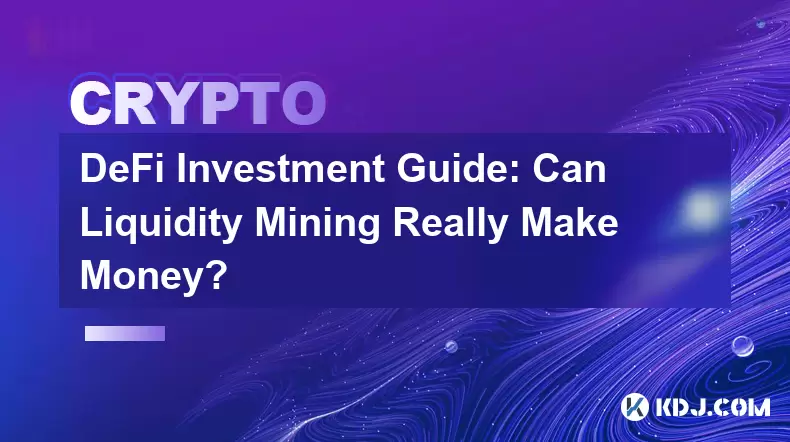
DeFi Investment Guide: Can Liquidity Mining Really Make Money?
May 28,2025 at 10:18am
Introduction to Liquidity Mining in DeFiLiquidity mining has emerged as a popular method for earning passive income within the decentralized finance (DeFi) space. This process involves users providing liquidity to decentralized exchanges or lending platforms in exchange for rewards, often in the form of the platform's native tokens. But the question on ...

What is the difference between DeFi and CeFi? An article analyzing the advantages and disadvantages of both
Jun 13,2025 at 03:57am
Understanding the Foundations of DeFi and CeFiTo fully grasp the difference between DeFi (Decentralized Finance) and CeFi (Centralized Finance), it’s essential to understand their foundational structures. DeFi operates on blockchain technology, primarily using smart contracts to execute financial services without intermediaries. In contrast, CeFi platfo...

What is DeFi? How to balance risks and returns?
May 31,2025 at 12:22pm
What is DeFi? How to Balance Risks and Returns? Decentralized Finance, commonly known as DeFi, represents a revolutionary shift in the financial ecosystem, leveraging blockchain technology to create an open, permissionless, and transparent financial service network. Unlike traditional finance, which relies on centralized institutions like banks, DeFi op...

How does DeFi lending work? What is the difference from traditional bank loans?
May 29,2025 at 05:36pm
Introduction to DeFi LendingDeFi lending, or decentralized finance lending, represents a revolutionary shift in the way borrowing and lending are conducted. Unlike traditional bank loans, DeFi lending operates on blockchain technology, offering a decentralized, transparent, and often more accessible approach to finance. This article will explore the mec...

Is DeFi safe? The opportunities and challenges of decentralized finance
May 27,2025 at 02:28pm
Decentralized Finance, commonly known as DeFi, has revolutionized the financial landscape by offering a range of financial services without the need for traditional intermediaries like banks. As with any innovative technology, the question of safety is paramount. This article delves into the opportunities and challenges that come with DeFi, providing a ...

DeFi Mining Tutorial: How to Maximize Profits and Reduce Risks?
May 27,2025 at 07:42am
DeFi, or Decentralized Finance, has opened up a new world of opportunities for crypto enthusiasts looking to maximize their profits through various mining strategies. However, with great potential comes significant risk. This tutorial aims to guide you through the process of engaging in DeFi mining while focusing on maximizing profits and reducing risks...

DeFi Investment Guide: Can Liquidity Mining Really Make Money?
May 28,2025 at 10:18am
Introduction to Liquidity Mining in DeFiLiquidity mining has emerged as a popular method for earning passive income within the decentralized finance (DeFi) space. This process involves users providing liquidity to decentralized exchanges or lending platforms in exchange for rewards, often in the form of the platform's native tokens. But the question on ...
See all articles

























































































